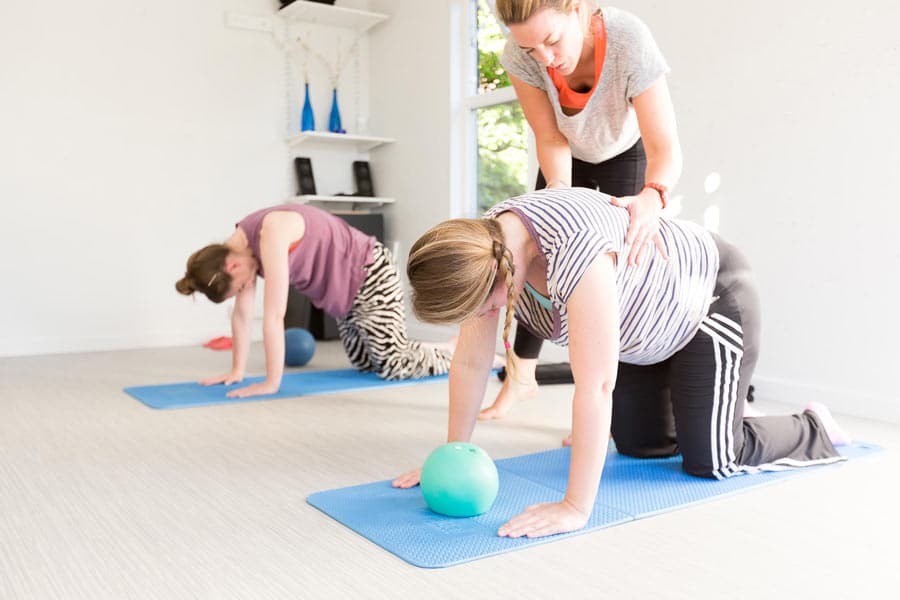What is Pilates? What’s best – mat or equipment Pilates? Should I do class or a 1:1 session?
These are questions I get asked a lot and they are good questions, so in my first blog post I will answer them!
What is Pilates?
You want to start out on a new fitness regime, try something new, recover from injury or your consultant has suggested you try Pilates. There’s a good reason why, Pilates is a low impact strength and flexibility form of exercise that is suitable for all age groups. Yes, it does focus on the core muscles which includes the deep stomach, back and pelvic floor muscles. Joseph Pilates, the creator of the exercises, called this the ‘powerhouse’. This is where all good movement should radiate from, an analogy I use is this: we know that to build a strong building you need good, well aligned and deep enough foundations for the frame of the building to sit on; it’s the same with human body, if we have a strong core then the upper body will be supported from beneath, the lower body free to move from the support from above.
Classical Pilates and How it Evolved
Joseph Pilates originally created the exercises, which he taught in a series of 34 movements all designed to work every muscle in the body in all planes of movement the spine can do. This style of Pilates is known as classical Pilates – the original repertoire. It’s tough, it requires all the Pilates principles to be in place to perform the exercises to the best we can which requires a good teacher and practice! The principles are:
- Breath
- Concentration
- Control
- Centre
- Precision
- Flow
Joseph Pilates created the exercise system during the first world war where he worked as a hospital orderly assisting the injured and the sick. He worked with determination to help them recover with daily exercises to help improve mental and physical health. Post war he moved to New York, on the crossing he met Clara who later became his wife. They opened the first body Contrology studio, sharing the premises with New York City Ballet. It was here that both Joseph and Clara refined their work, often hands on, tactile teaching, as English was not their first language. Attracting many high profile dancers, the method spread through the dance and performing arts community.

Evolution of Pilates
Through the years the Pilates Method has gradually evolved and developed to bring in our current knowledge of the human body and bio-mechanical thinking. The Pilates principles always remain, but teachers may fuse the Classical Pilates whilst integrating modern anatomical exercises which allows the teacher to modify exercises to the individual client, to obtain the best results in strength, flexibility and posture throughout the body.
Mat and Equipment Pilates
Mat Pilates may involve the Classical and evolved exercises and uses our body weight to condition the body. A class will involve you and the mat, meaning we use gravity as tool to either help assist a movement or provide a force through the body, each in turn improving flexibility and strength. Often teachers will use small pieces of equipment such as soft balls, bands, foam rollers, toning circles, wooden poles or towels to help a client get the most out of an exercise.
The equipment was originally designed by Joseph Pilates in the hospital camps where he attached springs to the patients’ beds to help them move whilst injured. From here Joseph designed the Reformer, Cadillac and Wunda Chair – all spring loaded equipment which uses the resistance of the spring to assist the body gain a better range of motion and therefore, flexibility within the joints. The spring’s resistance allows for greater force through the body, encouraging the muscles to strengthen under load. The instability of the springs challenge those deeper core muscles, plus on a moving surface there’s lot feedback into the body. A fantastic low impact workout for those returning to exercise, recovering from injury or looking to enhance their sports performance.
Class or 1:1
When you start Pilates it’s highly recommended you go with a 1:1 session first to pick up the fundamentals of the exercises, before joining a class. Pilates classes should, ideally, always be taught in small client numbers as there’s lots to learn and explore. You’ll get more out of it if the teacher can give you attention in each class and get to know you.
From there on in, it’s a personal thing. Do you need the attention of 1:1 sessions? If there is something specific you need or want to work on? Then yes, this would be the way to go. Or are you looking for a community setting where you get to know your fellow Pilates buddies each week and enjoy moving together? And budgets too, a class is a more affordable option for many, a class setting is great for keeping you on track with motivation, where you have to turn up each week!
Here at Body Balance Pilates, I offer both services. Classical and evolved Pilates, in a small group class or 1:1 setting. On the mat and the equipment.
Please get in touch to find out more about my Pilates classes in Bournemouth. I Look forward to seeing you soon!
